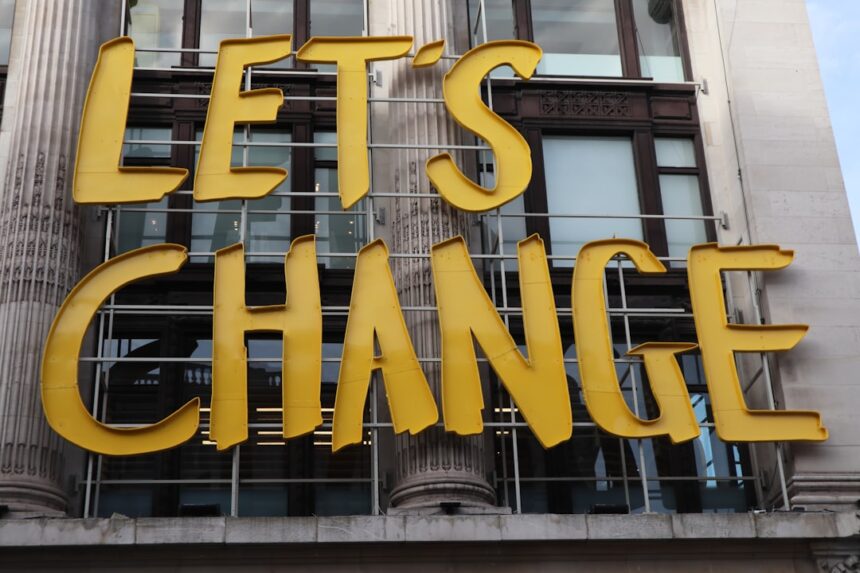Beliefs are the invisible forces that shape your reality. They act as the lens through which you perceive the world, influencing your thoughts, emotions, and actions. When you understand the power of your beliefs, you begin to realize that they can either propel you forward or hold you back.
Your beliefs can create a self-fulfilling prophecy; if you believe you can succeed, you are more likely to take the necessary steps to achieve your goals. Conversely, if you harbor doubts and fears, those negative beliefs can manifest in your life, creating barriers to your success. Recognizing the significance of beliefs is the first step toward personal transformation.
You may find that many of your beliefs were formed in childhood or through significant life experiences.
By acknowledging that your beliefs are not immutable truths but rather subjective interpretations of reality, you open yourself up to the possibility of change.
This understanding empowers you to take control of your narrative and reshape your life according to your desires and aspirations.
Key Takeaways
- Beliefs have the power to shape our thoughts, emotions, and actions, influencing our perception of the world around us.
- Limiting beliefs can hold us back from reaching our full potential and living a fulfilling life.
- Challenging and questioning our beliefs can help us uncover their origins and evaluate their validity.
- Exploring alternative perspectives can open our minds to new possibilities and help us break free from limiting beliefs.
- Practicing mindfulness and self-awareness can help us become more conscious of our beliefs and their impact on our lives.
Identifying Limiting Beliefs
To initiate meaningful change, it is crucial to identify the limiting beliefs that may be holding you back. These beliefs often manifest as negative self-talk or internalized messages that suggest you are not good enough, smart enough, or deserving of success. You might catch yourself thinking phrases like “I can’t do this” or “I’m not worthy,” which can create a cycle of self-doubt and inaction.
By becoming aware of these thoughts, you can begin to dissect their origins and understand how they influence your behavior. Start by keeping a journal where you document your thoughts and feelings about various aspects of your life. Pay attention to recurring themes or negative patterns that emerge.
You may discover that certain beliefs are tied to specific experiences or societal expectations. For instance, if you believe that failure is unacceptable, you might avoid taking risks altogether. By identifying these limiting beliefs, you create an opportunity for growth and change, allowing yourself to challenge the narratives that no longer serve you.
Challenging and Questioning Beliefs

Once you’ve identified your limiting beliefs, the next step is to challenge and question them rigorously. This process involves examining the validity of these beliefs and considering whether they are based on facts or assumptions. Ask yourself questions like, “What evidence do I have to support this belief?” or “Is there a different way to interpret this situation?” By engaging in this critical self-reflection, you can begin to dismantle the power these beliefs hold over you.
It’s essential to approach this questioning with curiosity rather than judgment. You might find that some beliefs are rooted in fear or past experiences that no longer apply to your current situation. For example, if you believe that public speaking is a skill you lack, consider whether this belief stems from a single negative experience rather than an accurate assessment of your abilities.
By reframing your thoughts and recognizing that many beliefs are not absolute truths, you empower yourself to adopt a more flexible mindset.
Exploring Alternative Perspectives
| Metrics | Value |
|---|---|
| Number of alternative perspectives explored | 25 |
| Percentage of time spent exploring alternative perspectives | 40% |
| Number of stakeholders involved in exploring alternative perspectives | 10 |
Exploring alternative perspectives is a vital part of reshaping your beliefs. When you challenge your existing beliefs, it opens the door to new ways of thinking and understanding the world around you. You might seek out diverse viewpoints by engaging with people who have different experiences or backgrounds than yours.
This exposure can help you see situations from angles you may not have considered before, broadening your understanding and allowing for personal growth. Additionally, reading books or consuming content that presents different philosophies can be enlightening. You may discover new ideas that resonate with you and inspire a shift in your thinking.
For instance, if you’ve always believed that success is solely defined by financial achievement, exploring alternative definitions of success—such as fulfillment, happiness, or contribution—can help you redefine what it means to lead a successful life. By embracing these new perspectives, you create space for more empowering beliefs to take root.
Practicing Mindfulness and Self-Awareness
Mindfulness and self-awareness are powerful tools in the journey of transforming your beliefs. By practicing mindfulness, you cultivate an ability to observe your thoughts and feelings without judgment. This practice allows you to become more aware of the automatic beliefs that arise in response to various situations.
When you notice these thoughts, you can pause and reflect on their validity rather than reacting impulsively based on ingrained beliefs. Incorporating mindfulness into your daily routine can take many forms—meditation, deep breathing exercises, or simply taking a moment to check in with yourself throughout the day. As you develop greater self-awareness, you’ll find it easier to recognize when limiting beliefs surface and how they affect your emotions and actions.
This heightened awareness empowers you to respond thoughtfully rather than reactively, enabling you to make choices aligned with your true values and aspirations.
Creating New Empowering Beliefs

With a clearer understanding of your limiting beliefs and a commitment to challenging them, it’s time to create new empowering beliefs that align with your goals and values. Start by envisioning the person you want to become and the life you wish to lead. What beliefs would support that vision?
For instance, if you aspire to be more confident in social situations, an empowering belief might be “I am capable of connecting with others.” To solidify these new beliefs, write them down and repeat them regularly. The act of verbalizing these affirmations reinforces their validity in your mind. Over time, as you practice embodying these new beliefs through your actions and decisions, they will begin to replace the limiting ones that once held sway over your life.
Remember that creating new beliefs is an ongoing process; it requires patience and persistence as you work toward internalizing them fully.
Using Affirmations and Visualization Techniques
Affirmations and visualization techniques are powerful methods for reinforcing new empowering beliefs. Affirmations are positive statements that reflect the reality you wish to create in your life. By repeating affirmations daily—whether aloud or in writing—you begin to rewire your subconscious mind, making it easier for new beliefs to take root.
For example, if you’re working on building self-esteem, an affirmation like “I am worthy of love and respect” can serve as a reminder of your inherent value. Visualization complements affirmations by allowing you to imagine yourself living out these new beliefs in real-life scenarios.
Picture yourself confidently navigating social situations or successfully pursuing a career change. This mental rehearsal not only strengthens your belief in your capabilities but also prepares you emotionally for the actions you’ll need to take in reality.
Seeking Support and Guidance
Embarking on the journey of transforming your beliefs can be challenging, which is why seeking support and guidance from others can be invaluable. Surrounding yourself with individuals who uplift and inspire you can create a positive environment conducive to growth. Whether it’s friends, family members, or mentors, having a support system encourages accountability and provides encouragement when self-doubt creeps in.
Consider joining groups or communities focused on personal development where members share similar goals and experiences. Engaging with others who are also working on their beliefs can foster a sense of camaraderie and motivation. Additionally, seeking professional guidance from coaches or therapists can offer personalized strategies tailored to your unique circumstances, helping you navigate obstacles more effectively.
Taking Action and Embracing Change
Transforming your beliefs is not just an intellectual exercise; it requires action and a willingness to embrace change. As you cultivate new empowering beliefs, look for opportunities to put them into practice in your daily life. Taking small steps outside of your comfort zone can help reinforce these new beliefs while building confidence along the way.
For instance, if you’ve adopted the belief that you’re capable of public speaking, seek out opportunities to speak in front of groups—whether it’s at work or within community organizations. Each time you take action aligned with your new beliefs, you’ll reinforce their validity in your mind and gradually diminish the power of any lingering limiting beliefs. Embracing change may feel uncomfortable at first, but it is through this discomfort that growth occurs.
Reflecting and Evaluating Progress
As you embark on this transformative journey, it’s essential to regularly reflect on and evaluate your progress. Set aside time each week or month to assess how far you’ve come in reshaping your beliefs and implementing new practices into your life. Consider keeping a journal where you document both successes and challenges along the way.
Reflecting on your progress allows you to celebrate achievements—no matter how small—and recognize areas where further growth is needed. It also provides an opportunity for self-compassion; remember that change takes time and effort, so be gentle with yourself during this process. By consistently evaluating your journey, you’ll gain insights into what works best for you while reinforcing your commitment to maintaining positive beliefs.
Maintaining and Sustaining Positive Beliefs
The final step in this journey is maintaining and sustaining positive beliefs over time. Just as negative beliefs can resurface if left unchecked, empowering beliefs require ongoing nurturing to remain strong. Incorporate practices such as daily affirmations, mindfulness exercises, or regular check-ins with supportive individuals into your routine.
Additionally, stay open to evolving your beliefs as you grow and encounter new experiences throughout life. What served you well at one stage may need adjustment as circumstances change; being adaptable ensures that your belief system remains aligned with who you are becoming. By committing to this ongoing process of reflection and growth, you’ll cultivate a resilient mindset that empowers you to navigate life’s challenges with confidence and grace.
In conclusion, understanding the power of beliefs is fundamental in shaping the life you desire. By identifying limiting beliefs, challenging them, exploring alternative perspectives, practicing mindfulness, creating new empowering beliefs, utilizing affirmations and visualization techniques, seeking support, taking action, reflecting on progress, and maintaining positive beliefs over time, you’ll embark on a transformative journey toward personal empowerment and fulfillment. Embrace this journey with an open heart and mind; the possibilities for growth are limitless when you believe in yourself.
Changing your beliefs can be a transformative journey, often requiring introspection and a willingness to challenge long-held assumptions. A related article that delves into the psychological aspects of belief change can be found on Unplugged Psychology’s website. This resource offers insights into the cognitive processes involved in altering one’s belief systems and provides practical strategies for fostering open-mindedness and adaptability. For more in-depth information, you can explore the article by visiting Unplugged Psychology. This site offers a wealth of knowledge on various psychological topics, making it a valuable resource for anyone interested in personal growth and mental well-being.
WATCH THIS! The Shocking Truth About Perception Loops
FAQs
What are beliefs?
Beliefs are the acceptance that something is true or exists, often without proof. They are formed through experiences, upbringing, culture, and personal interpretation of the world.
Why would someone want to change their beliefs?
People may want to change their beliefs if they feel that their current beliefs are limiting them, causing them distress, or hindering their personal growth and development.
How can someone change their beliefs?
Changing beliefs involves self-reflection, challenging existing beliefs, seeking new information, and consciously choosing to adopt new perspectives. It may also involve seeking support from others, such as therapists or support groups.
Is it easy to change beliefs?
Changing beliefs can be challenging, as they are often deeply ingrained and tied to one’s identity. It requires self-awareness, openness to new ideas, and consistent effort to overcome the influence of existing beliefs.
What are some common techniques for changing beliefs?
Common techniques for changing beliefs include cognitive restructuring, mindfulness practices, exposure to new experiences and perspectives, and seeking out diverse sources of information. Therapy and self-help resources can also be beneficial.




